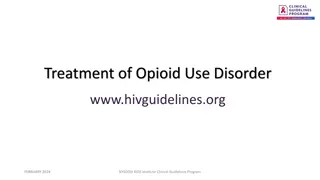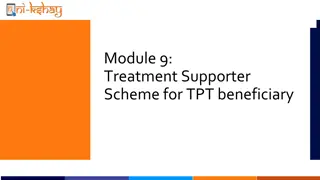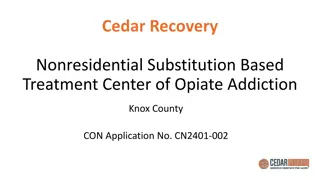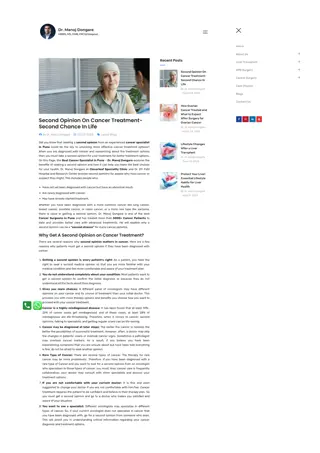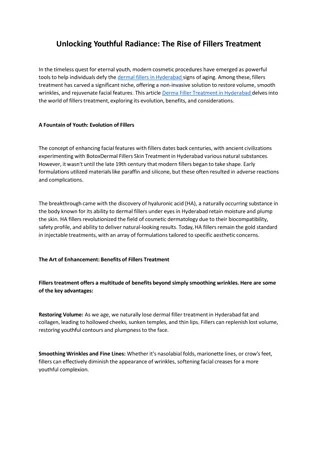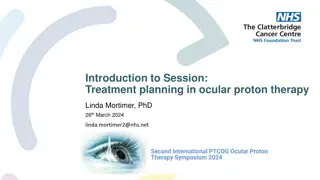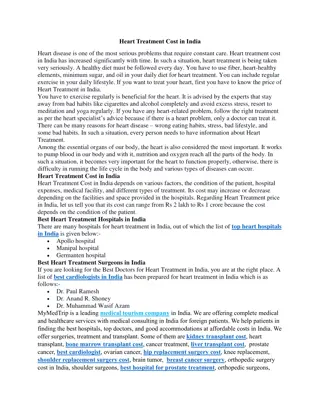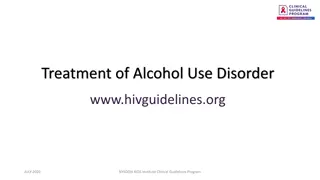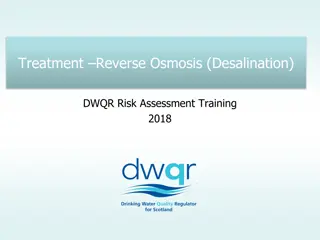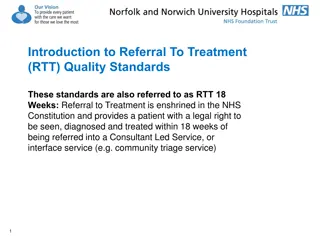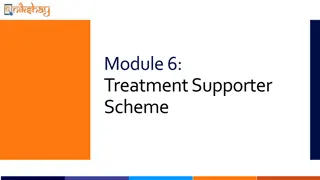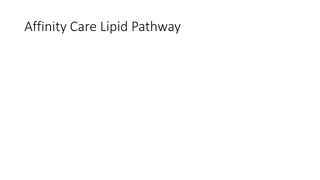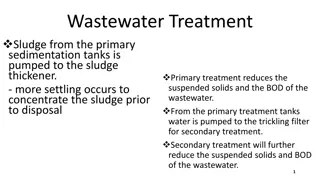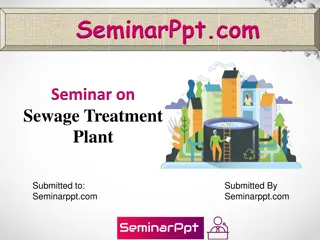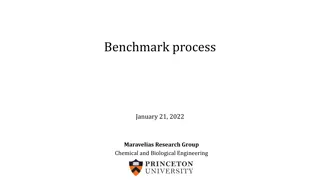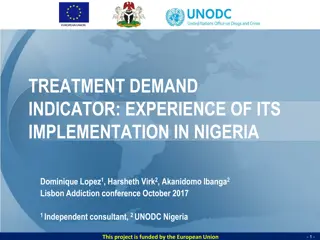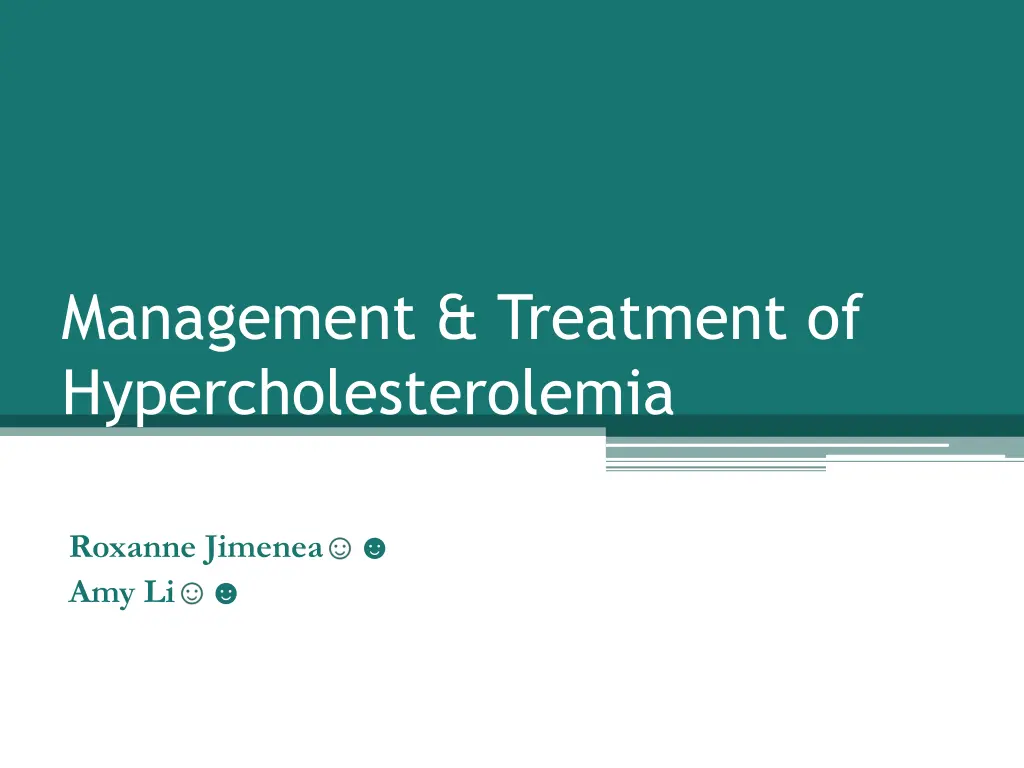
Management and Treatment of Hypercholesterolemia Overview
Learn about hypercholesterolemia, cholesterol basics, types of hypercholesterolemia, associated risks like cardiovascular disease, and specific genetic lipid disorders such as Familial Hypercholesterolemia (FH) and Autosomal Recessive Hypercholesterolemia (ARH). Understand the implications, management, and treatment options for individuals with high cholesterol levels.
Download Presentation

Please find below an Image/Link to download the presentation.
The content on the website is provided AS IS for your information and personal use only. It may not be sold, licensed, or shared on other websites without obtaining consent from the author. If you encounter any issues during the download, it is possible that the publisher has removed the file from their server.
You are allowed to download the files provided on this website for personal or commercial use, subject to the condition that they are used lawfully. All files are the property of their respective owners.
The content on the website is provided AS IS for your information and personal use only. It may not be sold, licensed, or shared on other websites without obtaining consent from the author.
E N D
Presentation Transcript
Management & Treatment of Hypercholesterolemia Roxanne Jimenea Amy Li
What is cholesterol? Waxy Soft Oily Fat-like http://4.bp.blogspot.com/-9dz6nbc1a8s/TZmM0Yc4r9I/AAAAAAAACZY/UvWDVRkgeYU/s400/scan53x.jpg HDL=Good LDL=Bad
Hypercholesterolemia low-density lipoprotein (LDL) cholesterol levels and/or triglycerides Dyslipidemias may also be present
Hypercholesterolemia may lead to the presence of cardiovascular disease associated with atherosclerosis of the arterial vessel wall and thrombosis
Types of Hypercholesterolemia Primary Hypercholesterolemia Familial Hypercholesterolemia (FH) mutations in LDL receptors LDL receptors cannot remove LDL LDL Autosomal dominant inheritance
Familial Combined Hyperlipidemia (FHCL) increased total cholesterol and/or triglycerides with an increased risk of premature cardiovascular disease Common lipid disorder often present in premature myocardial infarction patients Exact defect is unknown but is thought to be polygenetic
Autosomal Recessive Hypercholesterolemia (ARH) failure of internalization of LDL receptor buildup of LDL receptor proteins Rare monogenic lipid disorder very responsive to drug therapy
Sitosterolemia (Phytosterolemia) mutations in ABCG5 or ABCG8 Results in impairment of plant sterol excretions from enterocytes and hepatocytes leading to buildup of these sterols Extremely rare disorder Autosomal recessive inheritance
Secondary Hypercholesterolemia Type I Diabetes Mellitus (DM1) levels of atherogenic and cholesterol enriched apolipoprotein B due to hyperglycemia Glycemic control is extremely important in maintaining total cholesterol and/or triglyceride levels
Obesity & Metabolic Syndrome high density lipoprotein (HDL) triglycerides Increased childhood body mass index increases chances of dyslipidemia as well as cardiovascular disease in adulthood
Clinical symptoms no major clinical manifestations silent killer along with hypertension Some experience dizziness, short-sighted.
Nephrotic Syndrome & Chronic Kidney Disease Hyperlipidemia is characteristic of nephrotic syndrome Increased risk of atherosclerotic cardiovascular disease Proteinuria increases hepatic synthesis of lipoproteins Hypertriglyceridemia is characteristic of chronic kidney disease Results from: impaired removal of cholesterol side effects of certain medication (e.g., corticosteroids)
HMG-Co-A Reductase Inhibitors e.g., Simvastatin, Lovastatin, Atorvastatin Drug interaction: Grapefruit, cyclosporine, macrolide antibiotics, and antifungal agents. LDL + triglycerides Increases HDL Adverse Effects: Myopathy Rhabdomyolsis Hepatotoxicity Mechanism of Action: Inhibits cholesterol synthesis
Cholesterol Absorption Inhibitor Ezetimibe LDL Adverse Effects: Gastrointestinal discomfort Mechanism of Action: Inhibiting intestinal cholesterol absorption
Bile Acid Binding Resins Cholestyramine, Colestipol LDL Increases HDL+ triglycerides Adverse Effects: Gastrointestinal discomfort Mechanism of Action: Binds to bile acids Drug interaction: tetracycline, thiazide diuretics, aspirin, phenobarbital, pravastatin and digoxin.
Fibrates e.g., Fenofibrate, Gemfibrozil, Bezafibrate Variable effect on LDL Increases HDL Decreases triglycerides Adverse Effects Myopathy Rhabdomyolsis Hepatotoxicity Mechanism of Action unclear
Niacin LDL + triglycerides Increases HDL Adverse Effects Flushing Hepatic Failure Glucose Intolerance Mechanism of Action unclear
Things to keep in mind Orthostatic hypotension seat the patient up slowly let them sit for a couple of minutes before dismissing them. Upset stomach screen patients for erosion due to vomiting Recommend Proenamel
Clinical symptoms Xanthoma white or yellow patches around the eyelids
Review Questions What is the optimal level of LDL? <100 Which hyperlipidemic agent is known to have drug interactions with grapefruit? HMG Co-A reductase inhibitors (Statins) What is one adverse effect of Niacin that we can see on a patient? Flushing
References Grundy, S. M., et al. "Implications of recent clinical trials for the National Cholesterol Education Program Adult Treatment Panel III guidelines." Circulation 110.2 (2004): 227-239. http://www.heart.org/HEARTORG/Conditions/Chol esterol/AboutCholesterol/What-Your-Cholesterol- Levels-Mean_UCM_305562_Article.jsp#


